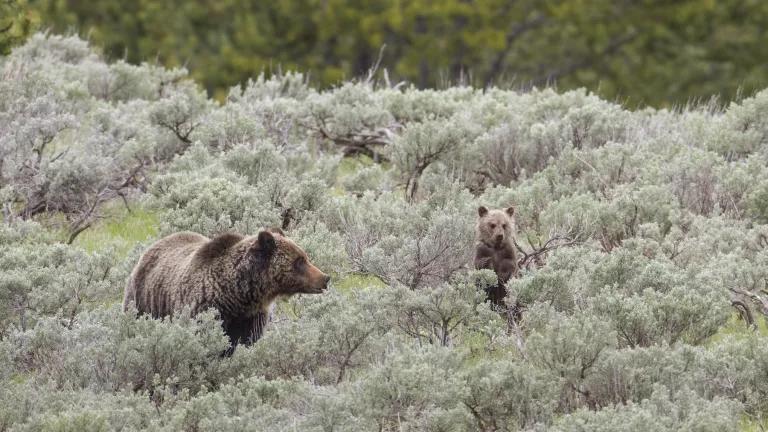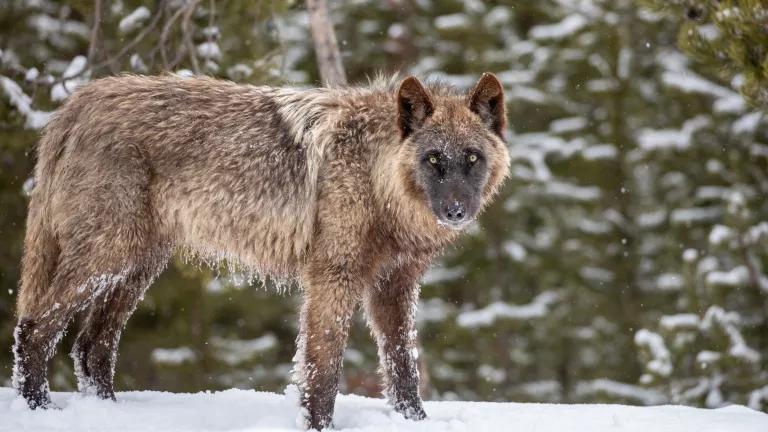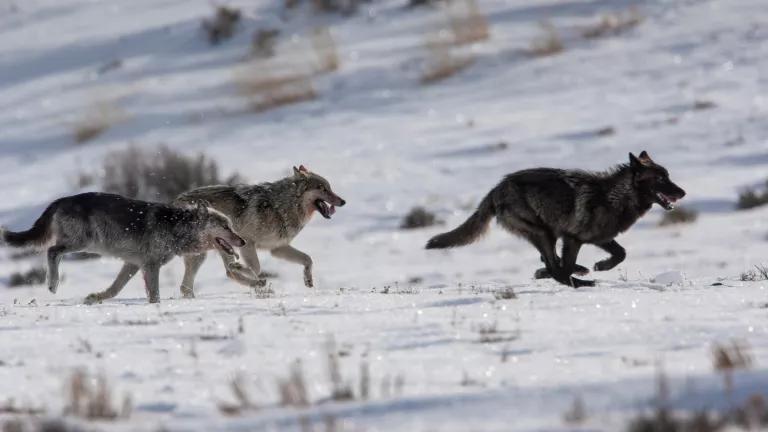Grizzly Bear Advisory Council Report Helps Chart Path Toward Recovery
Here is a summary of some of the report’s many forward-looking provisions.

Montana’s governor tasked an 18-member Advisory Council last year with developing recommendations about how the state’s grizzly bears should be managed in the future. The Council recently released its final report. With a few important exceptions (discussed here), the report’s suggestions would, if enacted, go a long way toward advancing grizzly recovery in the state. Here is a summary of some of the report’s many forward-looking provisions.
Outreach and Education
The report emphasizes the important role that state, federal, and Tribal agencies play in informing state residents and visitors about our collective responsibility to conserve grizzly bears—and the steps that each of us can take to help achieve that goal. For example, it encourages additional public bear spray and bear safety trainings across the state, the development of local- and state-level “Bear Aware” programs, and providing easier access to information about how to hunt safely in grizzly country.
Distribution and Connectivity
The report also offers an inspiring vision of grizzly bear presence, connectivity, and coexistence in Montana:
We envision fully recovered grizzly bear populations in the four identified recovery areas in Montana and landscapes in between that accommodate grizzly bear presence and connectivity while maintaining the safety and quality of life of those that live, work, and play in Montana.
To achieve recovered and connected populations, the report recommends, among other things, that grizzlies be allowed to move naturally between recovery zones (see map below), that resources for conflict prevention be prioritized in areas that are especially important for connectivity, that agencies and local governments collaborate to identify suitable areas to relocate grizzlies when needed, and that strategies be developed to reduce vehicle and train collisions with bears.

Reducing Conflicts
The report also recognizes the central role that preventing conflicts plays in grizzly bear conservation. For example, where conflicts could arise in communities, it encourages wildlife agencies to work with local governments to require that garbage and other potential bear attractants be stored in bear-resistant containers (one of several measures NRDC and other conservation groups recently asked the City of Bozeman to consider).
To mitigate conflicts in agricultural settings, the report asks the legislature to provide Montana’s Livestock Loss Board—which oversees a nonlethal loss-prevention grant program—with more funding to support conflict-reduction practices. It also recommends that wildlife agencies develop best management practices to reduce livestock and crop damage and encourages new and diverse partnerships between government agencies and community-based organizations to support conflict-mitigation efforts.
To reduce conflicts on public lands, the report suggests that land management agencies should create and enforce consistent food storage requirements, make bear resistant infrastructure available at campgrounds and other recreation areas, and develop plans to mitigate impacts that recreational users have on grizzlies.

A permanent electric fence constructed with help from NRDC to protect sheep from grizzly bears.
The Need for More Resources
Finally, the report discusses potential new sources of funding and resources to support grizzly conservation efforts. The Council considered the need for more resources to be "the greatest limitation, and therefore the greatest challenge, in working toward [the Council's] vision of a landscape that supports both grizzly bears and people.” The report emphasizes the need for more diverse and stable sources of funding to address issues such as livestock-grizzly conflicts, wildlife-friendly transportation solutions, and bear-resistant garbage containment programs.
To pay for these efforts, the report suggests several potential ways to increase available resources, including some measures that NRDC has been working to advance:
- diversifying funding for Montana Fish, Wildlife & Parks by developing new mechanisms such as a voluntary wildlife stamp (an idea also recommended by a previous citizen advisory group—see p. 5);
- broadening the types of “conservation practices” eligible for Natural Resources Conservation Service grant programs to include conflict-prevention measures;
- continuing the congressional appropriation that the federal agency Wildlife Services received last year for new nonlethal conflict-prevention specialists; and
- expanding the U.S. Fish and Wildlife Service’s grant program that provides funding for wolf-livestock conflicts to also cover grizzlies.
Many of these recommendations, if acted upon, would meaningfully contribute to grizzly bear conservation. Importantly, they were agreed to by Montanans with a diversity of perspectives, and in the interest of benefiting both the bears and all those who share the landscape.
As we approach opportunities to turn many of these ideas into realities, such as the upcoming legislative session and the development of a statewide grizzly bear management plan, these provisions should serve as a foundation from which we work to build and achieve the fully recovered grizzly bear populations that the Council envisioned, and that Montana’s grizzlies deserve.



